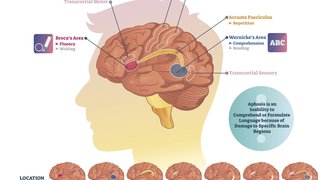
Trevor Williams says the brain surgery he had last year will forever demarcate his life.
The 25-year-old Rockwall resident thinks of it in terms of before and after, or, more descriptively, “night and day.”
The “before” side is largely overshadowed by the epileptic seizures he began having with regularity in 1998, when he was just 7, along with the Asperger’s syndrome he felt the effects of for most of his life.
“It’s complicated, but I’ve always believed the two conditions are intertwined,” he says. “Both are neurological disorders with social implications. All my life I was a person who wasn’t fun to be around, who was addicted to video games, who just didn’t like being around people. I would, among other things, never smile – not for pictures and just not much in general. The constant medications didn’t help much with any of that.”
Darkness past
Although Mr. Williams began having seizures in elementary school, his Asperger’s was not diagnosed until he was a teenager. He says he and his parents nevertheless recognized early on that he was “different.” In and out of doctor’s offices and clinics, prescribed various drugs including, at one point, Adderall, he says his school years were times he’d rather forget.
“I misbehaved a lot throughout elementary, middle, and high school,” he says. “Doctors and therapists my parents took me to would say, ‘He’s depressed.’ High school, especially, was the worst time of my life. There was a lot of bullying.”
Following his high school graduation, not interested in academics, Mr. Williams took a job as an auto mechanic. The often very hot and sometimes frustrating working conditions exacerbated his epilepsy. By then he had coped with having seizures for more than a decade and knew they were typically brought on by dehydration, tiredness, and stress, any and all of which could affect his medications.
In July 2014, several of those factors were at play when he suffered a seizure while driving.
“Usually the aura that precedes a seizure – which for me is just sort of a nauseous, sick feeling that causes my whole mind to focus on my heartbeat and breathing – gives me time to prepare, but not that time,” he recalls.
Following the resulting crash, his driver’s license was suspended for six months. “It was a life-changer,” he says.
Reason for hope
By early 2016, Mr. Williams’ doctors at UT Southwestern – led by neurologist Mark Agostini, M.D. – recommended he be evaluated for epilepsy surgery. Medication for epilepsy is the first line of treatment. However, up to 40 percent of people with epilepsy fail to respond to anticonvulsive drugs, and once two or three medications have been tried without success, as in Mr. Williams’ case, neurosurgery is often the best chance for reducing the seizures – and possibly for eliminating them entirely.
“Because seizures affect brain function, they can have an impact on mood, memory, and many other aspects of someone’s life. For patients like Trevor, treating epilepsy requires considering all these aspects of the disease,” Dr. Agostini says.
Surgery is not a likely solution for patients whose seizures originate in multiple areas of the brain, so the first step for Mr. Williams’ doctors was to determine his seizures’ source. As part of a Level 4 Epilepsy Center, UT Southwestern employs the latest advancements for making just such a determination.
One of those advancements is a technique called stereoelectroencephalography, or stereo EEG, which provides a more detailed picture of the brain’s activity than a standard EEG. Instead of placing electrodes on the scalp, where skin, bone, muscle, and other tissue can get in the way, the electrodes in a stereo EEG are implanted in the brain itself, giving an extremely precise measurement of electric brain activity and making an accurate diagnosis much more likely.
Mr. Williams’ surgeon, Brad Lega, M.D., introduced this emerging, minimally invasive technique to UT Southwestern in 2015, making the UTSW program one of only a handful of locations in the country currently offering it.
Once the electrodes were implanted, it became a matter of monitoring Mr. Williams and waiting for his next seizure. This happens in an epilepsy monitoring unit (EMU), a controlled environment attended by epilepsy experts. (See related story below.)
“What it meant for me was having to be in the hospital and constantly recorded for 12 days straight in April 2016,” Mr. Williams says, “and when you’re 6 foot 4” and in a hospital bed that long, that’s no fun.”
On the upside, the evaluation was able to pinpoint his seizure-onset location: It was a single source, so stage two of the operation – removing that source via a procedure called a right temporal lobectomy – was scheduled for July 15.
Life-changing procedure
Mr. Williams went home three days after his mid-July operation. As hoped for, the weeks that followed were seizure-free. But then something else happened as well.
“About two months later, everything changed,” Mr. Williams says. “I just woke up one day in September and decided to start making all these changes in my life. The surgery was strictly for my epilepsy, but I’m convinced it affected my Asperger’s too.”
Dr. Lega notes that seizures are a common comorbid disorder with Asperger’s and other autism spectrum disorders.
“People deal with a social condition like Asperger’s their whole lives,” he notes. “In Trevor’s case, treating his epilepsy to rid him of seizures has manifested in taking away some of the other barriers to his social functioning.”
Mr. Williams says he just suddenly lost the desire to isolate and that these days his high-end video game player is gathering dust. He continues to take classes at a community college, which he began doing shortly after his crash, and is active in a local chapter of the Fellowship of Christian University Students (FOCUS). In early 2017, he also took a part-time job working with second-graders in an after-school program.
“In the past, I probably wouldn’t have envisioned myself being able to do a job like this,” he says. “But I love it. There’s even a couple of the kids I work with who have autism – I recognized the traits immediately – and I enjoy trying to help them because I feel I know something of what they’re going through.
“In FOCUS, I’m seeing people almost every day, which is a far cry from how things used to be, when I could go months without seeing a friend because I had so few. So it’s been a transformation. In a real way, my hobby has become socializing.”
Dr. Lega says that while it’s a great sign Mr. Williams hasn’t had a seizure since his surgery, it’s too early yet to say the procedure cured him. He notes that as time goes on, however, there’s less likely of a chance the seizures will return.
“Trevor’s case represents the strength of our program at UT Southwestern,” Dr. Lega says. “The therapy we were able to give required integrating the efforts of people from the neurology side, the radiology side, the EEG technicians, the surgical side, and more. Trevor also illustrates how when we get the right kind of patients into our program we can really make their lives better.”
Mr. Williams, meanwhile, is looking only forward. “It wasn’t so long ago that I was consumed with avoiding having seizures,” he says, “but now I really feel like I’m ready to seize the day.”










